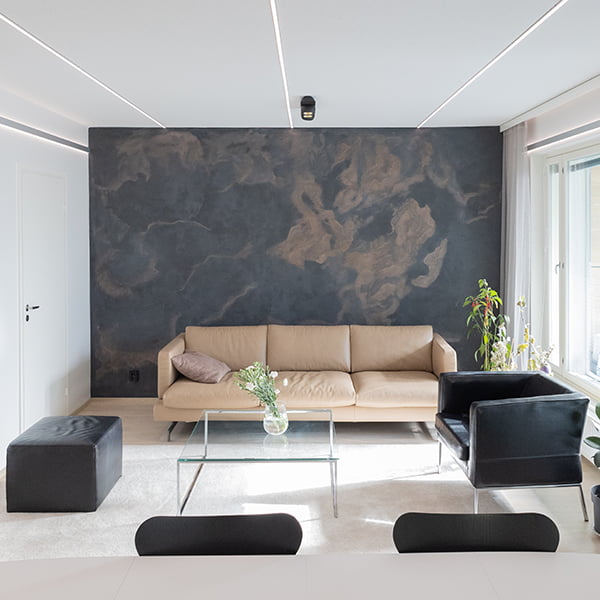Why are Led lights the best solution for home lighting?
Led lights are the best choice because:
- Long service life
- Low energy consumption
- Less waste
- Led lights are safe

High-quality luminaires make it easy to design versatile spaces
Benefits of LED lighting
Sustainability
It has long been proven that LED lights are more durable than traditional light sources.
Fluorescent tubes and incandescent lamps can be broken, halogen light sources can be damaged during installation, simply by oil sticking from the installer’s fingers.
Did you know that in many countries there is a standard that requires LED lights to be dropped from four metres without breaking. Led lights therefore do not have traditional breakable parts.
Compact size
Led circuits are available in a wide range of shapes and sizes, as many different led lights are intended for different uses. For example, a spotlight with a single led circuit can be 200x300mm or the led lights we install on the roofs of homes typically only contain a 20x20mm led circuit.
LED lights are also following the trend where everything is getting smaller. In LedStore’s led lights, the smallest led circuits are in COB led strips with 840 leds per metre!
Long service life. How long does the LED light stay on?
Led lights are very long-lasting The durability of LED lights is influenced by the lack of breakable components and the technology of LEDs is long-lasting. Let’s compare:
- Incandescent lamps have a lifetime of 1000 hours
- Fluorescent lamps last between 5 000 and 15 000 hours
- Metal halide lamps last 5 000 – 15 000 hours
- LED lights can last 25 000 – 80 000 hours, theoretically up to 200 000 hours

High quality Led lights can last more than 10 times longer than fluorescent bulbs and up to 50 times longer than modern incandescent bulbs!
Most good quality Led lights, if left on 24 hours a day, 7 days a week, could last up to 6 years!
If the same LED lights were used normally and turned on for an average of 6 hours a day, they would last 18 years or more.
LED lights for general use have only been in use for a little over a decade, so these estimates are mostly from laboratory tests; with good cooling they can last even longer.
.. but why do some led lights last for such a short time?
Because their components are made of weaker materials, plastics. Even in low quality led lights, the led light itself will last, but the transformer/power supply/connector in the lamp will fail due to low quality electronics or if there is not enough metal in the lamp to cool the led circuitry… Tests have shown that a 10 degree Celsius increase from 60 -> 70 degrees on a led circuit can halve the life of the led circuit!
Low maintenance
As a result of the extended lifetime of LED lights, the need to replace failed lamps is significantly reduced.
This saves time and money, and is particularly important for lighting that needs to be serviced by an electrician. This is a big advantage over other light sources, as they are more easily damaged and require more frequent replacement.
Why should you replace your old lights with Led lights?
Efficiency
Led lights are the most efficient light source and are widely available. (Laser is only just coming..) Led lights are also much more efficient than their traditional counterparts:
Incandescent lamps produce around 10-17 lumens per watt
Fluorescent lamps can produce 60 lumens per watt
Metal halide lamps produce 75-100 lumens per watt
LED lights produce up to 150 lumens per watt, and they are even more efficient, as we have tested LED lights with 200 lumens per watt! At this point the cooling is 100 times that of an LED circuit and suitable applications for this type of LED light are just waiting to be made.

This also means an awful lot of money in electricity bills when comparing energy consumption between different light sources.
It is easy to calculate that replacing halogen lamps with LED lamps, for example, saves 5 times more electricity! At current electricity prices, that’s a LOT OF MONEY!
Reducing energy use also has a positive impact on the environment and self-sufficiency.
Safe disposal of Led light
LED lights contain less toxic waste.
They do not contain arsenic, lead, mercury or any of the harmful gases found in conventional light sources.
Therefore, they are not dangerous to dispose of and are easy to recycle.

Less harmful light
Led lights emit less radiation than conventional (fluorescent, incandescent, halogen) light sources.
The harmful radiation from conventional light sources comes from UV and infrared light.
UV and infrared radiation can be harmful to health, especially after prolonged exposure.
Low temperature of the LED
Led lights also produce heat, but it is only a fraction of what conventional light sources produce.
Led lights produce significantly less heat at full power at 40-70 degrees Celsius, compared to Halogen at 280 degrees Celsius…
This is because they consume less electricity, do not emit infrared radiation and in high quality LED lights, the LED circuits are mounted directly on the cooling frame.
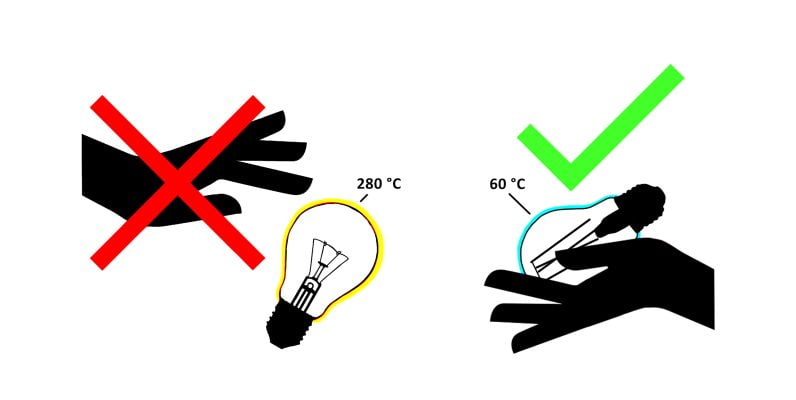
Can an LED light burn?
Led in the true sense of the word does not catch fire due to the low temperature. If, on the other hand, it means wearing out, then yes, all good things do come to an end and the led light runs out of steam.
The benefit and longevity of low temperature has been observed in public spaces where the lower temperature of LED light has extended the life of the lampholders in the luminaire, as the high heat of conventional lamps weakens the lampholder components from the inside. The most common example is the oxidation of fluorescent tube supports, which creates a risk of electric shock and fire.
Led lights allow less glare
Modern LED luminaires are less glaring than traditional light sources. This is due to the new luminaire design made possible by LED technology, as LED luminaires can be of any size and shape.
Glare can damage our vision and cause headaches, especially after prolonged exposure
We are all exposed to a lot of artificial light when we light our homes, but reducing glare is particularly important for office workers and users of roads and public spaces.
How does LED lighting work?
Essentially, LED lighting works by converting electrical energy into light, efficiently.
It is better to understand how LED lighting works as a light source, rather than as a component.
Led lights have found their way into all kinds of lighting, including interior wall lights, floor lights and ceiling lights. In addition to their improved efficiency and lifetime, the lamps offer a wide range of options suitable for a wide variety of precision work.
Led light offers amateur and professional interior designers a wide range of options for their projects. This increased flexibility allows designers to use LED lights in a variety of ways, including the increasingly popular indirect lighting.
When choosing LED lighting, the buyer has to make choices with different colour temperatures, beam angles, optical distribution, colour rendering and other considerations.
This can be tricky, so here’s a quick guide to the terms…
Colour temperatures
Colour temperature is defined as a number on the Kelvin scale (K)
Most luminaires use a few standard colours, these are…
1800-2200K The warmest white of all, often found in cosy bars and cafés
2700K Again warm white, used in hotels and homes where incandescent bulbs are not popular
3000K Still warm white, used in shops, cafés. Not too yellow light.
4000K Known as neutral white, used in workplaces and bathrooms where vigilance is required
5000K-6500K Cool cool white, used in hospitals in situations where attention to detail is required or in homes where “daylight” is desired

Colour spectrum
Many colours other than white can be produced from Led lights, but are not usually in the same luminaire as the white light.
These are known as RGB LEDs, which means red, green and blue. These Led lights are usually used with applications or remote controls to produce up to 16 million shades.
With standard RGB it is difficult to make some colours, such as pink or brown, but with some additional colours it is possible. These LEDs are known as RGBW (W = white). Often how these led lights are available as led strip lights.

Distribution of light
Led lamps differ from incandescent light sources in the way they emit light. Whereas incandescent bulbs usually emit almost 360° around the luminaire, the opening of the Led light is very straightforward because the Led is attached to metal. Therefore, the light limit is clearly visible and the LED lights have an opening angle. There are, of course, bulbs that can produce light similar to an incandescent bulb, but these are low wattage to avoid too much heat generation. LED bulbs that are too powerful tend to be short-lived.
These led lights come in a variety of angles and types…
The beam angles of LED downlights and kitchen spotlights can be anything from 10° to 80°. A typical LedStore spotlight has an opening angle of 45 degrees.
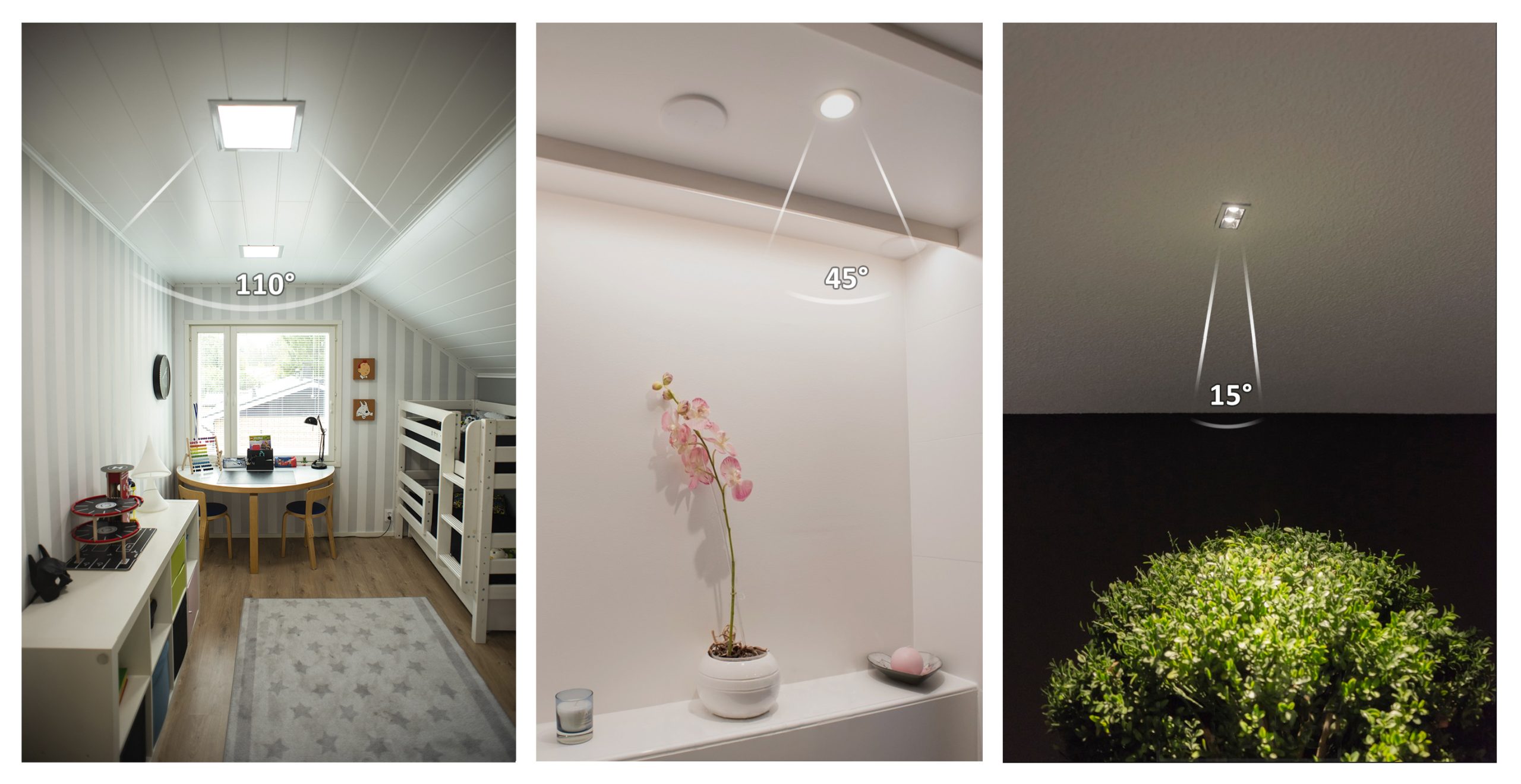
Colour rendering
Colour rendition is the most important thing in homes and interior design projects. This is measured by the colour rendering index (CRI), which is something between 1 and 100. The sun is given a value of 100, because it reproduces all the colours cleanly.
Led lights usually start at CRI 70 and the highest are CRI 98-99. Unfortunately, most of the luminaires on the market do not show a colour rendering index, as they are between 70 and 80. A low quality, low colour rendering index LED light is the cheapest to produce.
CRI 70 can be used for street lighting, and is certainly a huge improvement on the orange colour we were used to. It was created by the once widely used High Pressure Sodium lamps. There are also replacements for them in Led lamps, E27 and E40.
CRI 80 is suitable for offices and other applications where basic details are important, but not the most important.
CRI 90 – CRI 98 should be used especially in shops where the colours of clothing and other products need to be prominent to boost sales. Both in homes where you want quality lighting and in interiors where red is red.
Other important issues for professionals working with LED lights include;
Individual colour rendering values. These are also numerical values up to 100. Each colour is represented by the letter R and a corresponding number.
The CRI value measures colours in 15 different colours. This is where the consumer is usually taken for a coffee, as the RA figure on the packaging only has values between 1 and 8.
For example, the most difficult colour for LEDs is red, and the code for this is R9. Good quality Led lights have an R9 value closer to 100, while poorer versions may be closer to 0. Again, this is particularly important when looking for quality LED lighting and interior design.
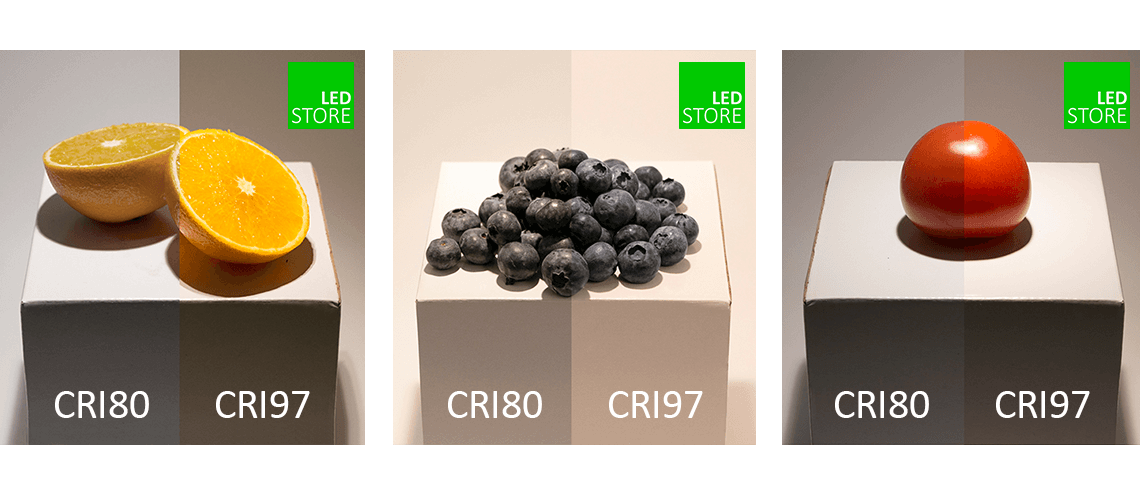
Glare
Modern LED luminaires are driven by luminaire structures where glare can be controlled by a thin structure without the need for huge lenses, for example the popular 600×600 light panel. This is particularly important for office workers who spend a lot of time looking at screens that increase glare. Also, the placement of the lamp is affected and you have probably come across a situation where you are looking at a LED light on your monitor screen..
There are also values to measure this. It is known as the Unified Glare Rating (UGR)
Office lighting requires UGR < 19, while more general applications require UGR < 2 5 Led panel 600×600 or 600×1200 URG value is low < 19.
Led lights lead the way to a greener planet
Reducing energy dependence
Reducing our energy dependency is one of the biggest challenges of our time. Finding renewable energy sources has been the focus of energy innovation in recent decades, but reducing the amount of energy consumed is also very important.
Led lights are playing their part in this development.
Typically, 10% of energy consumption in a European country is used for lighting. This figure was higher in the past, and by 2022, it is estimated that Led lights will already account for more than 80% of the global lighting market, rising to closer to 100 by 2030.
It should be remembered that LED lights use about 10% of the energy of conventional incandescent light sources.
So if the country switches entirely to Led lights, the savings in energy consumption will be significant.

Reducing pollution
Using LED lights helps to save a huge amount of carbon dioxide emissions, because LED lights produce only 10% of carbon dioxide emissions compared to incandescent bulbs!
So, as stated earlier, LED lights last 10 times longer than incandescent bulbs!
That’s only 10% of the waste!
Led lights are therefore in use for a long time
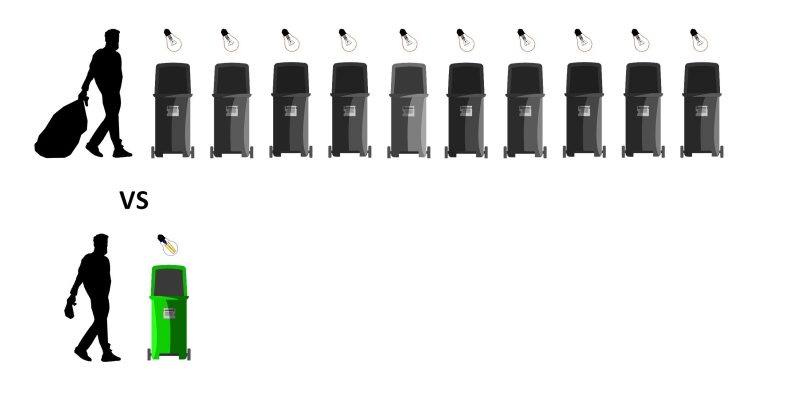
Management of toxic waste
Incandescent light bulbs also contain small amounts of mercury, which is harmful to the environment and humans.
In terms of environmental impact, one drawback of LED lights is the large aluminium heat sinks that they use to dissipate heat.
This means that they actually produce more waste than CFLs, but this discrepancy is easily managed by recycling aluminium or using recycled aluminium.
So, a compilation. Why are LED lights great?
Repetition is the mother of learning. The two best reasons to choose led lights for your home:
- Low energy consumption
- Longer lifetime
Ultimately, compared to incandescent lamps, there will be far fewer LED lights to manufacture, package, distribute, use and dispose of at the end of their useful life. As an LED trader that’s a good and bad thing… =)
Did you know that LedStore also acts as a recycling point for LED lights!
Led lights, last words
Here was some information and the terminology. Now you’ll know what all is involved when it comes time to choose new LED lights for your home. Buying led lights doesn’t have to be a difficult process, as long as you know what to look for.
Remember that we are always available to support you along the way, by email(myynti@ledstore.fi) and by phone (045 251 4510). As always, feel free to share photos of your own projects on social media at #ledstorefi IG and ledstore.fi FB. We love to see the cool things our LEDs do, and it helps to provide inspiration for those who are not sure about the power and awesomeness of LEDs. Did you know that we already have over 3500 pictures of our LED installations in our Gallery!
Led lights in the Gallery:
Product gallery: pictures of products in different installation locations
Indirect light: indirect light in different spaces
Room-specific: Light in different rooms
References: entire house that have been Photographed
Some other articles on the subject:
Choosing transformers – to the article
Shorter article about the choice of led strip -article
Toilet renovation and new lighting with led strip -article

